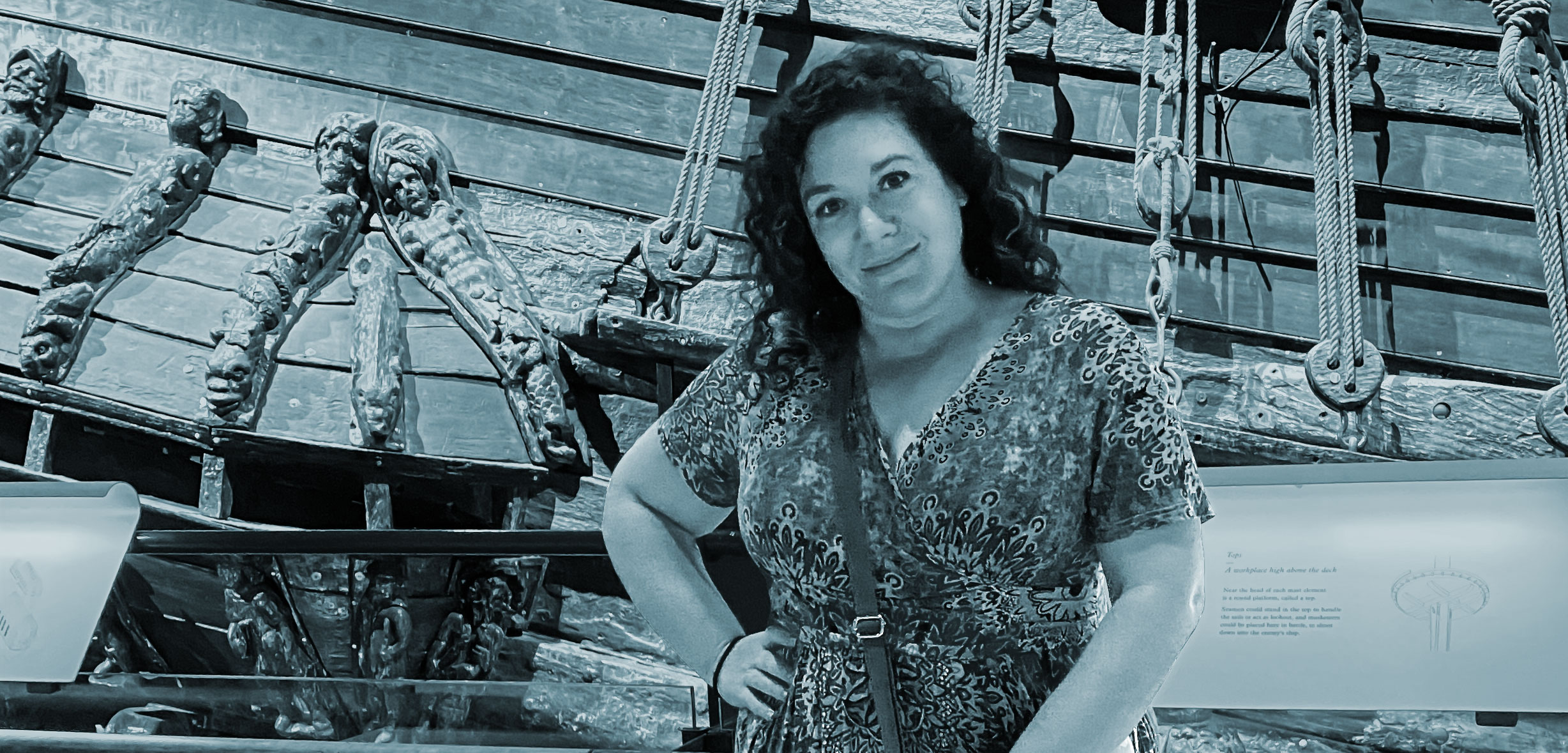Coastal Job: Pirate Researcher
Rebecca Simon studies pirates of the past to set the record straight today.
Article body copy
Some people work in cubicles, others work in kitchens, but the most intriguing workplace of all may be the coast. Meet the people who head to the ocean instead of the office in our Coastal Jobs series.
Historian Rebecca Simon researches pirates from the 17th and 18th centuries. She marvels at how much we get wrong about these ship raiders and works to better inform the public through writing, speaking, and consulting with podcasters and TV scriptwriters.
The number one thing people are disappointed to learn about pirates is that they didn’t bury treasure. Pirates rarely found gold, silver, and jewels on ships. They were after goods they could sell like alcohol, textiles, and spices as well as helpful items such as food, medicine, and repair supplies. The hidden chest with a map? That’s a myth.
What I want to do with my work is bring history to the public and correct the wrong ideas people have about pirates. Many people see them as horrifying criminals. Or revolutionaries—Robin Hoods of the seas. In fact, pirates were quite diverse. Some were definitely brutal murderers, but most were working-class sailors who had been treated badly on European merchant or naval ships and who set off on their own for more freedom.
That doesn’t mean pirates were lawless. Many pirate ships had rules called articles. Some articles prohibited drinking on board because alcohol could cause trouble. Gambling was usually banned, too. There were rules about compensation if someone suffered a severe injury such as losing an arm or a leg. And the articles outlined the distribution of goods: the higher a crew member’s rank, the bigger their share. For example, if a captain took one and a half shares, the quartermaster, who was second in command, might have been paid one and a quarter. Then everybody else might have received a quarter share.
Pirate ships were often egalitarian. Piracy was a path for people who didn’t have many options: escaped slaves on the run, queer or nonbinary folks, and people from marginalized religious groups such as Jews. If the pirates felt their captain wasn’t doing his job, they could vote him out and select someone new.
Researching pirates is tricky. They didn’t keep records. Either that or none have survived. I read trial transcripts from when pirates were prosecuted, newspaper articles from the 1600s and 1700s, letters between British officials conferring about pirates, and testimonies from survivors of pirate attacks. I try to stitch together as accurate a picture as possible from the sources I find. Using this information, I consult for TV documentaries and podcasts, and I write books and articles to show what pirate life was really like. I also share pirate facts on TikTok, which have become quite popular.
Something I study is how our perceptions of pirates have changed. The British government used to treat pirates like terrorists. In the 17th and 18th centuries, Britain was establishing itself as the main power in the Caribbean and North America. That made pirates a big political threat. If caught, pirates were executed with particular brutality. The executioner hung them with a shorter noose, so when the scaffold opened, their neck wouldn’t break. Instead, they were strangled to death, which could take an hour. It was called the Marshall’s Dance because their limbs jerked uncontrollably.
Today’s pirates want the same thing as pirates from hundreds of years ago: to get rich fast. Whether they’re targeting cruise ships or private yachts, they attack with similar tactics of pirates past, which usually means “negotiating” for the most goods they can steal without having to draw weapons. Bloody battles are, and were, rare. Pirates want to get in and out quickly.
Stopping piracy is difficult. Maritime laws are complicated, making it a challenge to arm vessels like cargo ships. And pirates are like guerrilla fighters. You never know where they’ll strike. I think we’ll always have piracy. It’s pretty impossible to stamp out.

